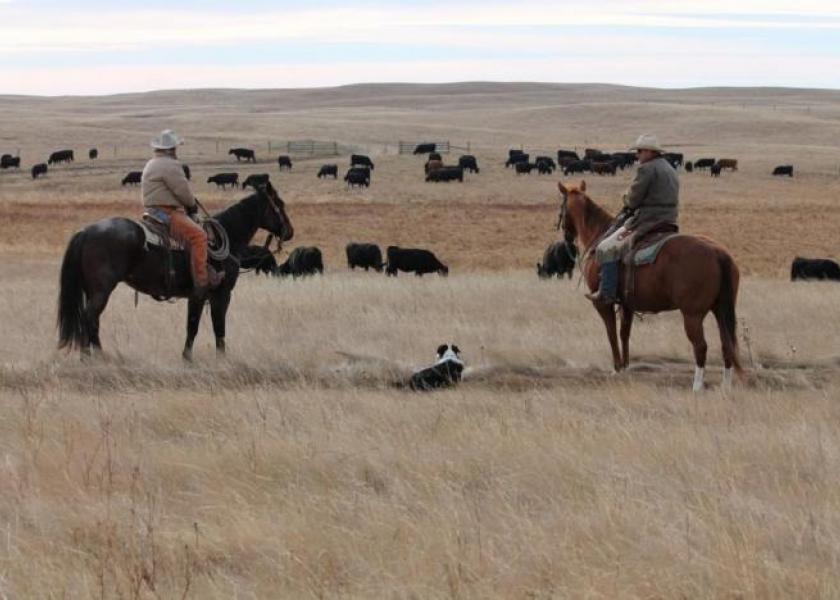BIF Releases New Guidelines for Performance Evaluation

Since its establishment in 1968, the primary purpose of the Beef Improvement Federation (BIF) has been to bring standardization to performance testing and evaluation. In keeping with this mission, BIF is proud to unveil the latest version of its Guidelines for Uniform Beef Improvement Programs. After nine printed editions, the Guidelines have been reinvented in a web-based Wiki format, which can be found at http://guidelines.beefimprovement.org.
“This new format allows the Guidelines to be continually updated to keep pace with the rapidly evolving field of objectively evaluating beef cattle,” explains BIF President Tommy Clark.
According to Darrh Bullock, BIF eastern regional vice president and chairman of the Guidelines committee, says, “The overall result is a more dynamic set of Guidelines that will enhance and rejuvenate BIF’s contribution to the industry. It achieves the goal of returning the Guidelines to its role of standardization rather than just documentation. Overall, these re-imagined Guidelines will again make BIF the first place people will go when looking at enhancing their breed improvement program.”
The new Wiki-based BIF Guidelines are divided into three principal sections: 1) Data Collection and Processing; 2) Genetic Evaluation; and 3) Selection and Marketing. In addition, there are areas about BIF and a “Useful Pages” section that contain an invaluable “Essential Reading” list for those interested in delving deeper into all things related to the objective evaluation of beef cattle. There are also hot links in most sections of the Guidelines, which leads producers, industry personnel and academics to explanations of related subjects.
“Looking back to the early years of performance testing, the pioneering groups involved included bull test stations, the state Beef Cattle Improvement Associations, the national organization Performance Registry International, breed associations, bull studs, and academia,” Bullock explains. “However, there was no standardization between these various early performance trailblazers, with each developing their own methodology and terminology. As an example, some groups were using 200- and 400-day weights to compare animals’ growth, while others were using 205-day weaning weights and 365-day yearling weights. This led to considerable confusion within the industry, but with the formation of BIF, all these groups were brought together to develop a consensus on a uniform approach for the various performance practices and terminology.”
Fast forward to today, and the need for industry standardization is just as important as it was in 1968 when BIF was founded. Examples of new traits and methods that need standardization include novel traits like feet and leg scores, udder scoring, hair shedding and pulmonary arterial pressure (PAP). Feed efficiency trials, predictions for sustained fertility and whole herd reporting are other examples where best practices and uniformity between performance organizations is needed. This urgency for standardization has become even more magnified with the implementation of multi-breed EPDs by a number of organizations.
Bullock says, “Reinventing the Guidelines was a three-year project, which started when Drs. Lauren Hyde and Bruce Golden approached the BIF board of directors with the idea of switching the Guidelines from the books that had been printed in the past to the new web-based format. Although the Guidelines use Wiki software, they differ from Wikipedia in that suggested updates pass through a section editor for review before inclusion in the Guidelines.”
The writing of the Guidelines involved a large number of people including a coordinating subcommittee comprised of 11 people, as well as a drafting committee of another seven people. They then recruited approximately 40 additional people whose expertise was used to write the draft of the various aspects of the Guidelines. Dr. Merlyn Nielsen, University of Nebraska-Lincoln professor emeritus of animal genetics, then served as overall editor.
BIF will host its 52nd Annual Beef Improvement Federation Symposium — Online the week of June 8 starting at noon CDT each day. The new Wiki format will be discussed during the Advancement in Producer Applications breakout session on Friday at 2 p.m. For a complete schedule and to register for the free online symposium visit, BeefImprovement.org/symposium.
For more information on the new BIF Guidelines for Uniform Beef Improvement Programs, contact Bullock at dbullock@uky.edu.







